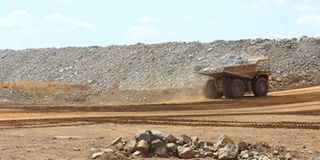How children are lured into mining

What you need to know:
- The report, released earlier this week by researchers from the Ifakara Health Institute (IHI), says contributing factors include high school dropout rates, poverty, broken families, low prioritisation of education and peer influence.
Dar es Salaam. A new report has revealed how children as young as seven years of age are lured into small-scale mining activities in the country.
The report, released earlier this week by researchers from the Ifakara Health Institute (IHI), says contributing factors include high school dropout rates, poverty, broken families, low prioritisation of education and peer influence.
IHI researchers Emmy Metta, Ramadhani Abdul and Eveline Geubbels compiled the report with the support of USAID funding through the USAID Kizazi Kipya (new generation) project.
The report says the exploitation of minors — both girls and boys — is widespread in small-scale mining.
“Payment is highly variable. Children are taken advantage of because of their weak negotiation position. Sometimes agreed on pay is paid out late or not at all or children’s mining yield is stolen from them.’’
The report adds that mining communities define a child in terms of economic independence rather than age or being part of a family structure. “There is a widely shared opinion that parents are responsible to care and provide for their children, that children have the right to go to school, and that child labour beyond light work helping in the household should not be condoned.”
According to the researchers, working in mining is widely said as a major cause of children dropping out of school, absenteeism and poor academic performance.
The report also says that hours of work depend on whether children work alone or for/with their family or a third person and may be “very long”. Instances of sexual and physical abuse of children were reported from all study sites, according to the experts.
Perceived and reported health problems of children in mining range from those specific to mining activities, namely injuries and consequences of mercury and sulphuric acid exposure; those related to the living circumstances (stomach and bowel disease, malaria, pneumonia), and those related to the poor and dangerous social environment (HIV, sexual/physical trauma, alcohol and drug abuse consequences).
As part of the solution to the problem, the study urges authorities to engage communities in developing and enforcing child-labour by-laws and raise awareness on the health and development risks associated with children working in mining.
It also recommends the provision of parental skills training to help parents understand the consequences of child labour in mines, help keep families intact and reduce child marriage.
It also calls for economic strengthening and devising of alternative sources of income for families of children working in mines through savings and lending groups; vocational training; small start-up capital, and training in personal financial management and entrepreneurship.



